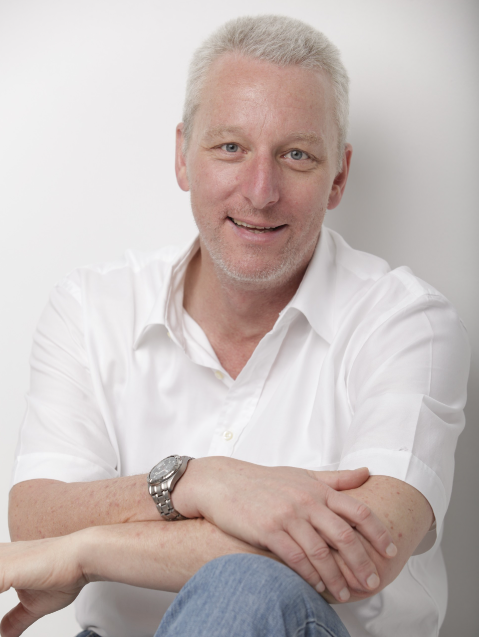
Dr Justus Apffelstaedt, specialist surgeon
Does it really hurt to have a mammogram and are drinkers really at a higher risk of developing breast cancer? With so many myths and preconceived ideas on the internet and in our minds, it is often difficult to distinguish between fact and fiction. Breast, thyroid, and parathyroid specialists Dr Justus Apffelstaedt and Dr Fatima Hoosain help to debunk some common misconceptions about breast health.
MYTH 1
There is an increase in the incidence of breast cancer among younger women.
TRUTH
Increased media coverage of cases of younger women with celebrity status being diagnosed with breast cancer contributed to the perception that there has been a marked increase in the occurrence of breast cancer among younger women. There is indeed more breast cancer in younger women, but the increase is rather small and most breast cancer patients in South Africa and abroad have typically been, and still are, women between the ages of 50 and 70. What is true however is that breast cancer is often missed in younger women as they are often not included in screening programmes. A cancer is therefore usually detected at later stages (when a palpable lump is already present). It is worthwhile consulting with a specialist about when you should start screening and whether genetic testing could be of value if, as a younger woman, you have close relatives that have cancer.
MYTH 2
Chemotherapy is the most important factor in reducing breast cancer related deaths.
TRUTH
Two approaches in combination have proven to be the most effective way of reducing breast cancer deaths: Screening mammography by specialised centres and treatment in a specialised, multidisciplinary centre, offering surgical, medical and radiation oncological as well as plastic surgical services by specialists in these disciplines that have a specific interest in breast health. A case volume of more than 150 new cases of breast cancer per year has been shown to half the long-term recurrence rate.
MYTH 3
Drinking increases your breast cancer risk.
TRUTH
With regard to wine, alcohol and more importantly, its metabolite acetaldehyde, are highly carcinogenic, i.e. cancer-causing. The good news, however, is that humans can metabolize both substances very effectively and therefore, when consumed in moderation, the cancer-causing effects of alcohol are barely noticeable. Wine, in particular, contains many bioactive substances known to decrease breast cancer risk and there is considerable evidence from in-vitro studies and observational studies, that moderate wine consumption as part of the “mediterranean” diet and lifestyle may reduce breast cancer risk. Heavy alcohol use is universally accepted to be detrimental and greatly increases breast cancer risk and mortality.
MYTH 4
All mammograms are equal, and mammograms don’t mean much in breast cancer treatment.
TRUTH
The bulk of all mammography performed in South Africa is for screening purposes. The accuracy of mammographic diagnosis during screening depends on:
- Using optimal equipment to produce the mammogram. AI is also finding its way into mammography.
- The optimal image and reading is produced by a radiographer specialising in mammography.
- The optimal interpretation of the image is usually provided by doctors who specialise in mammography interpretation and read at least 2000 mammograms per year.
- A process of rigorous quality control, where all outcomes are recorded and regularly analysed.
Only where all these conditions are met will it be possible to realise the promise of lowering mortality rates from breast cancer and increasing breast conservation rates.
High quality breast imaging will detect about 95% of all breast cancers. Breast cancers that do not image are rare if the above criteria of a breast imaging centre are met. In such centres, women whose breast cancer is detected at screening will have the same survival chances as women without breast cancer.
MYTH 5
It doesn’t make a difference where you are treated.
TRUTH
A very important, but often overlooked factor is where a patient is treated. It has been shown that dependent on where the woman is treated for breast cancer, the risk of death within 5 years can be up to 60% higher in environments where only few breast cancers are treated versus environments where more than 150 new breast cancer cases are treated per year. A multidisciplinary team of specialists that have a specific interest in breast health, and who work with more than 150 new cases per year have been shown to have half the long-term recurrence rate. The effect of a specialised and multidisciplinary treatment is greater than any chemotherapy, hormonal or radiation therapy.
MYTH 6
It is better to remove the entire breast when you have breast cancer.
TRUTH
Breast cancer metastasized to places outside of the breast. The tumour in the breast will not kill you – the spread of the cancer to the brain, lungs etc. will. As breast cancer often spreads to other areas early in the course of the disease, a mastectomy will not guarantee you better survival than breast conserving therapy. Should a mastectomy be necessary, breast reconstruction can often take place during the same session that the mastectomy is performed. A multidisciplinary treatment approach involves an oncologic surgeon, a radiation oncologist, a medical oncologist and a plastic surgeon who have to optimally time and sequence the individual treatments. In a well-run multidisciplinary breast clinic, out of 100 women with breast cancer approximately, 60 will have breast conserving therapy, 35 will have a mastectomy with immediate reconstruction and only 5 will leave the theatre with neither their own breast nor a reconstructed breast.
Myth 6B: Immediate reconstruction leads to higher recurrence rates.
TRUTH:
Immediate reconstruction has not been demonstrated to change recurrence rates, regardless of whether the reconstruction is prosthetic or with the patient’s own tissue.
MYTH 7
Mammograms are painful.
TRUTH
A mammogram, when performed by an experienced mammographer, is not a painful procedure.
Well trained mammographers should be able to help you to relax. When you are relaxed, the pectoral muscles behind the breast will relax, which should result in a painless mammogram.
If the breasts are painful, a mammogram should not be done until the reason for the tenderness has been addressed.
At most, a mammogram may be a little uncomfortable. However, the short-term discomfort outweighs the long-term benefits.
MYTH 8
After breast augmentation it will be harder to detect breast cancer and you’ll be more at risk.
TRUTH
You will not be at a greater risk after you have had a breast augmentation, as it does not constitute an increase in glandular tissue. It is very important to have your mammogram taken by an experienced mammographer because special techniques are needed to demonstrate all breast tissue.









